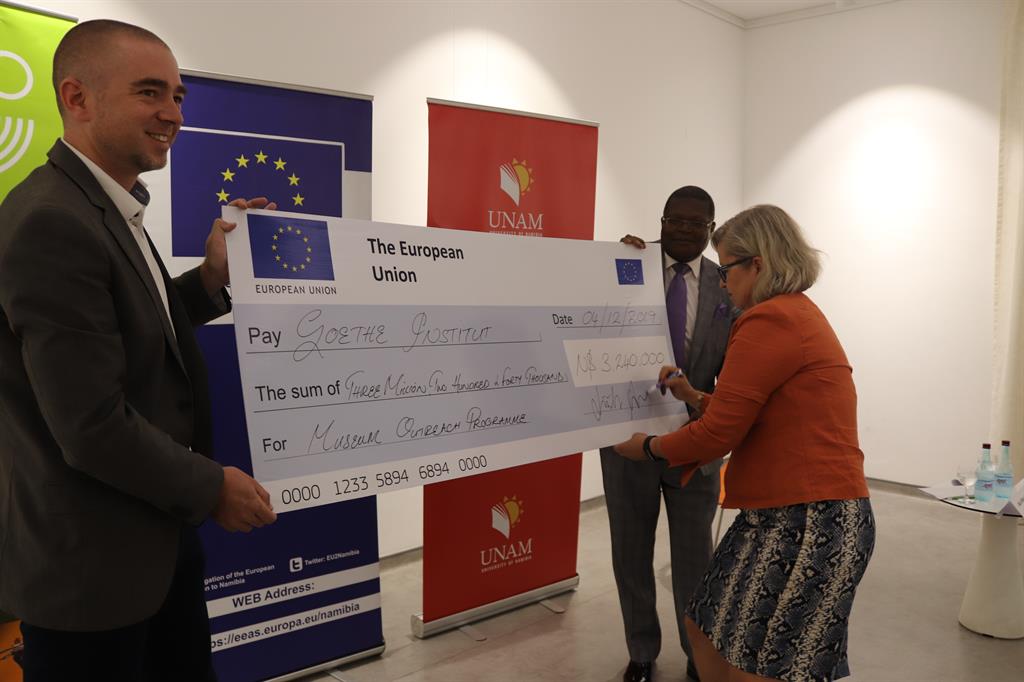Footprints of generations
The Museum Outreach Programme (MOP) of the Goethe-Institut and University of Namibia (Unam) is set to commence next year.
Justicia ShipenaOn 4 December the University of Namibia (Unam) and the Goethe-Institut signed a project agreement with the European (EU) Delegation to Namibia on the Museum Outreach Programme (MOP).
Funded by the EU to the tune of 200 000 euros, the three-year programme will contribute to the protection of cultural rights with special attention to human rights, ethnic minorities and indigenous people of Namibia.
The MOP benefits from past cooperation between the Goethe-Institut and Unam on the pattern shift in museology across post-colonial Africa that emphasises the importance of community engagement in the operations of a museum as an institution of heritage management and conservation.
Speaking at the official signing ceremony and cheque handover, Daniel Stoevesandt, director of the Goethe-Institut Namibia, said the MOP will engage with civil society, in particular the San, Damara, Nama and Ovahimba communities, through workshops and other ways of community outreach to train them on the preservation and management of their cultural heritage.
According to Jairos Kangira, dean of humanities and social sciences at Unam, there is a need to be prepared to care for conserving the objects that are found in the various museums, hence the project will offer training in scientific and traditional methods of conservation.
“The project will also offer an opportunity for our students and researchers to document traditional forms of conservation and thus value the indigenous knowledge systems that exist in Namibia,” he said.
Kangira elaborated that MOP aims at redefining museums as places of self-valorisation by ensuring that identity construction comes from within the communities.
“It promotes inter-ethic cultural tolerance through sharing mobile exhibitions and through mobile museum education (museum box),” he said.
He further said the project addresses the university’s mission through its emphasis on producing qualified museum professionals equipping local communities with skills that are required for sustainable heritage management and local economic development.
“Students will benefit from work-integrated learning and above all from the establishment of the teaching museum and conservation laboratory at Unam.”
Sinikka Antila, EU ambassador to Namibia, congratulated the two institutions for the excellent initiative and touched on the topic of building bridges between people and reinforcing mutual understanding while empowering communities.




Comments
My Zone
No comments have been left on this article